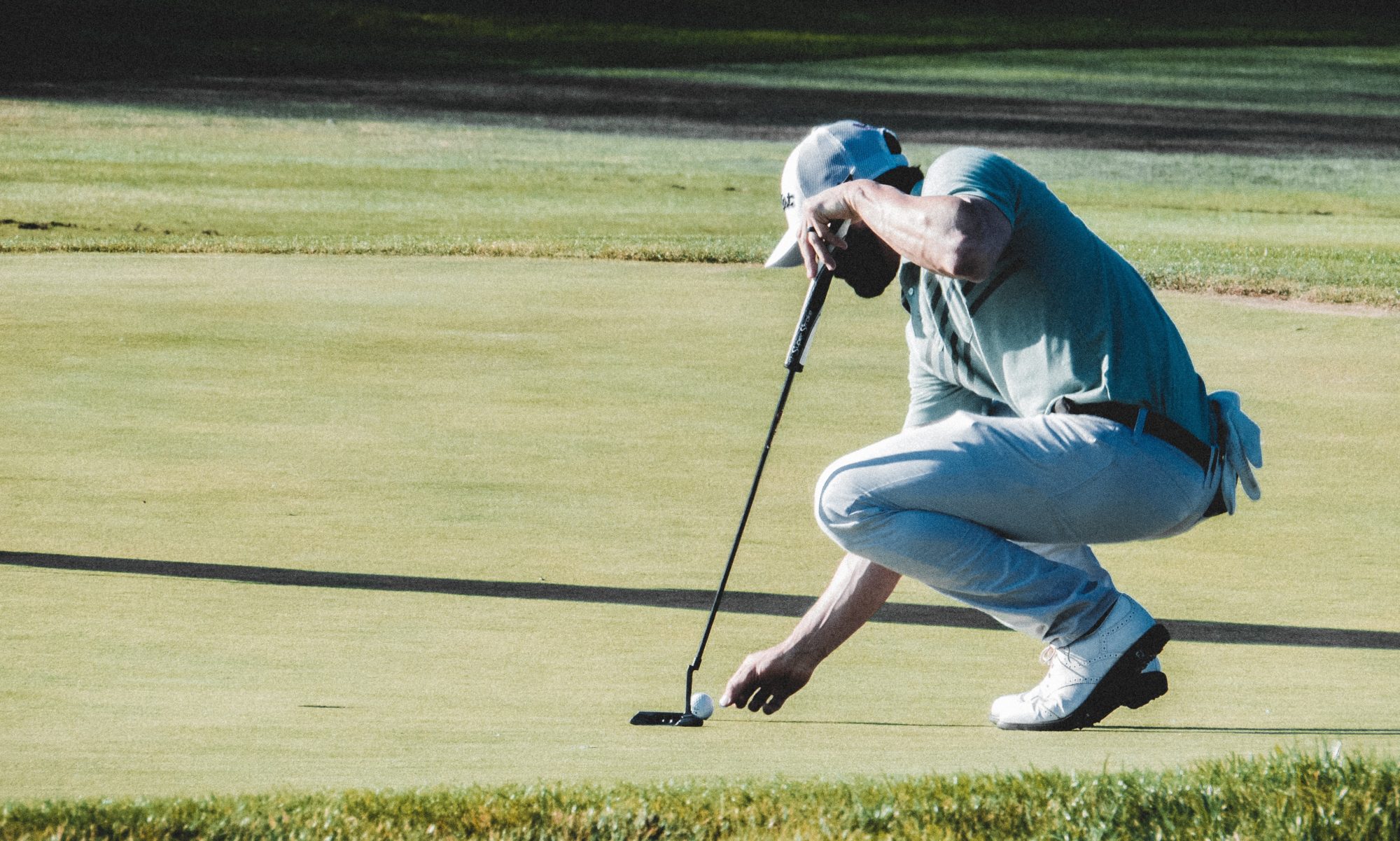Stance
The stance is the foundation of the golf swing and like many other sports requires the player to prepare for athletic action. Begin by evenly dividing your weight between both feet, slightly favoring the balls of the feet not the toes or heels. Next, position the feet approximately shoulder width apart. Proper stance width helps maintain good balance, too narrow a stance increases instability and too wide restricts hip and shoulder turn, making it difficult for the player to properly transfer weight back onto and over the right leg during the backswing.
Turn the left foot (forward foot) outward toward the target about a quarter turn. This position allows the player to maintain dynamic balance throughout the golf swing and well into the finish. The back foot (right foot) should generally be pointed straight forward or at a right angle to the target line. This position allows power-generating resistance to build by stabilizing the right leg while the upper body turns around it.
Alignment/Aim
Aligning or aiming the body properly is crucial if one desires to develop a powerful repeating golf swing. The first key point of alignment is; align the leading edge of the
clubface square or at a right angle to the target line. Then set the tips of the toes, knees, hips, shoulders and eyes parallel to that same line. This method of alignment is
referred to as aiming “parallel left.” If a player is to err or deviate from this common principle it would typically involve the feet and body aiming slightly to the left of the
target. Keep in mind though, whatever combination of body and clubface positions a player employs is deemed acceptable if it results in the clubhead consistently traveling down the target line with the clubface square to that line.
Golf is a target game and it is very easy to get caught up in the complexity of the perfect golf swing. However, many who follow this quest fail to recognize that no matter how beautiful the swing becomes it is of little value if aimed incorrectly
Posture
Another key element to develop a powerful repeating golf swing requires the upper body to be tilted over the ball slightly at address. This is achieved by bending from the hips over the ball, not the waist. Bending from the hips allows the spine to remain straight and the buttocks to protrude slightly, whereas if we tilt from the waist the spine tends to curve. The head should also match the plane of the back; this allows the left shoulder to turn underneath the chin during the backswing. This very much helps maintain centeredness while completing the backswing.
Article Source: http://EzineArticles.com/?expert=Kevin_R._Cotter
Article Source: http://EzineArticles.com/7100068
